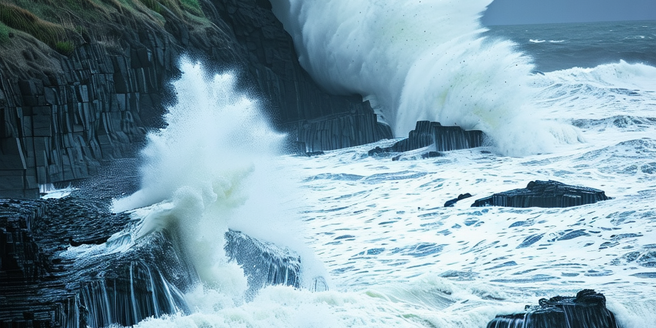
Understanding La Niña: Climate Phenomenon Overview
La Niña is a climate pattern characterized by cooler than normal sea surface temperatures in the central and eastern Pacific Ocean near the equator. This phenomenon occurs as part of the larger El Niño-Southern Oscillation (ENSO) cycle, which significantly influences global weather patterns. During La Niña, trade winds strengthen, pushing warm water towards Asia while upwelling cooler water from the deep ocean. The strengthening of easterly winds leads to variations in temperature and precipitation worldwide, potentially causing droughts, floods, and cyclones in different regions. Understanding La Niña is crucial for improving predictive capabilities and preparing for its impacts on agriculture, water resources, and ecosystems worldwide. It provides a framework for understanding how such climate anomalies can trigger widespread meteorological changes.
Impact of La Niña on Oceanic Ecosystems
La Niña events have profound effects on oceanic ecosystems by altering oceanic currents and thermal stratification. During a La Niña, the cooler surface waters lead to enhanced upwelling along the coastlines, which injects nutrients into the upper layers of the ocean, stimulating primary production and increasing phytoplankton populations. This increase, in turn, supports a surge in the abundance of fish and other marine organisms. However, changes in water temperature and circulation patterns can also disrupt local ecosystems. For instance, cooler waters can be detrimental to coral reefs, causing stress to marine species adapted to warmer conditions. Understanding these changes helps scientists and conservationists anticipate shifts in marine biodiversity and ecosystem productivity associated with these climate events.
Changes in Species Distribution During La Niña
During La Niña events, temperature shifts and altered ocean currents can lead to significant changes in species distribution. Cooler water temperatures can cause marine species that favor warmer conditions to migrate to different areas or depths, seeking optimal temperatures for survival and reproduction. This can lead to changes in local fisheries as some commercially important species may move out of their traditional habitats. Additionally, nutrient upwelling can cause plankton blooms that attract a variety of marine life, including fish, seabirds, and marine mammals. However, these shifts can also disrupt established food webs, affecting predator-prey relationships and altering the structure of marine communities. Monitoring these changes is essential for managing fisheries and protecting marine biodiversity.
Adaptations of Marine Life to Climate Variability
Marine organisms exhibit various adaptations to cope with climate variability like La Niña events. Some species have developed resilience to fluctuating temperatures by altering their ranges or changing their reproductive timing. Fish may exhibit phenotypic plasticity, allowing them to adjust their physiology or behavior in response to environment changes. Certain coral species, for instance, may increase their thermal tolerance or form symbiotic relationships with more heat-tolerant algae. Variability in food availability due to changes in upwelling and plankton levels may also drive adaptations in feeding strategies and migration patterns. Studying these adaptations provides valuable insights into the resilience mechanisms marine species use to survive ongoing climate changes and helps predict future ecosystem responses.
Conservation Strategies for Affected Marine Habitats
Conservation strategies are crucial for protecting marine habitats affected by La Niña events. Implementing marine protected areas (MPAs) can offer significant refuge for ecosystems under stress, allowing habitats and species to recover from climate-related impacts. Restoration projects, including coral reef rehabilitation and seagrass planting, can also enhance habitat resilience. It’s important to focus on preserving genetic diversity within these ecosystems to ensure long-term adaptation and survival. Increased monitoring of vulnerable species and habitats helps to track ecological changes and inform adaptive management practices. Collaborative efforts between governments, NGOs, and local communities facilitate sustainable resource use and raise awareness of marine conservation issues. Additionally, research into developing climate-resilient species and reducing other human stresses aids in building robust strategies to safeguard marine biodiversity in the face of climate variability.
